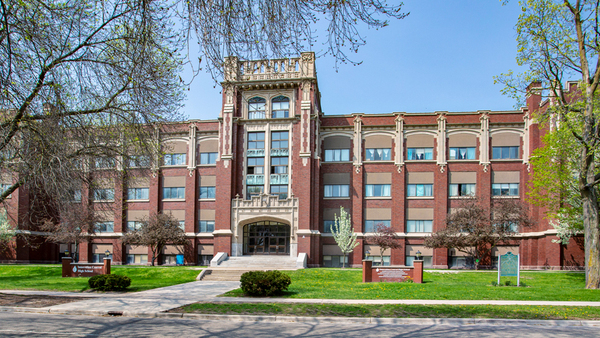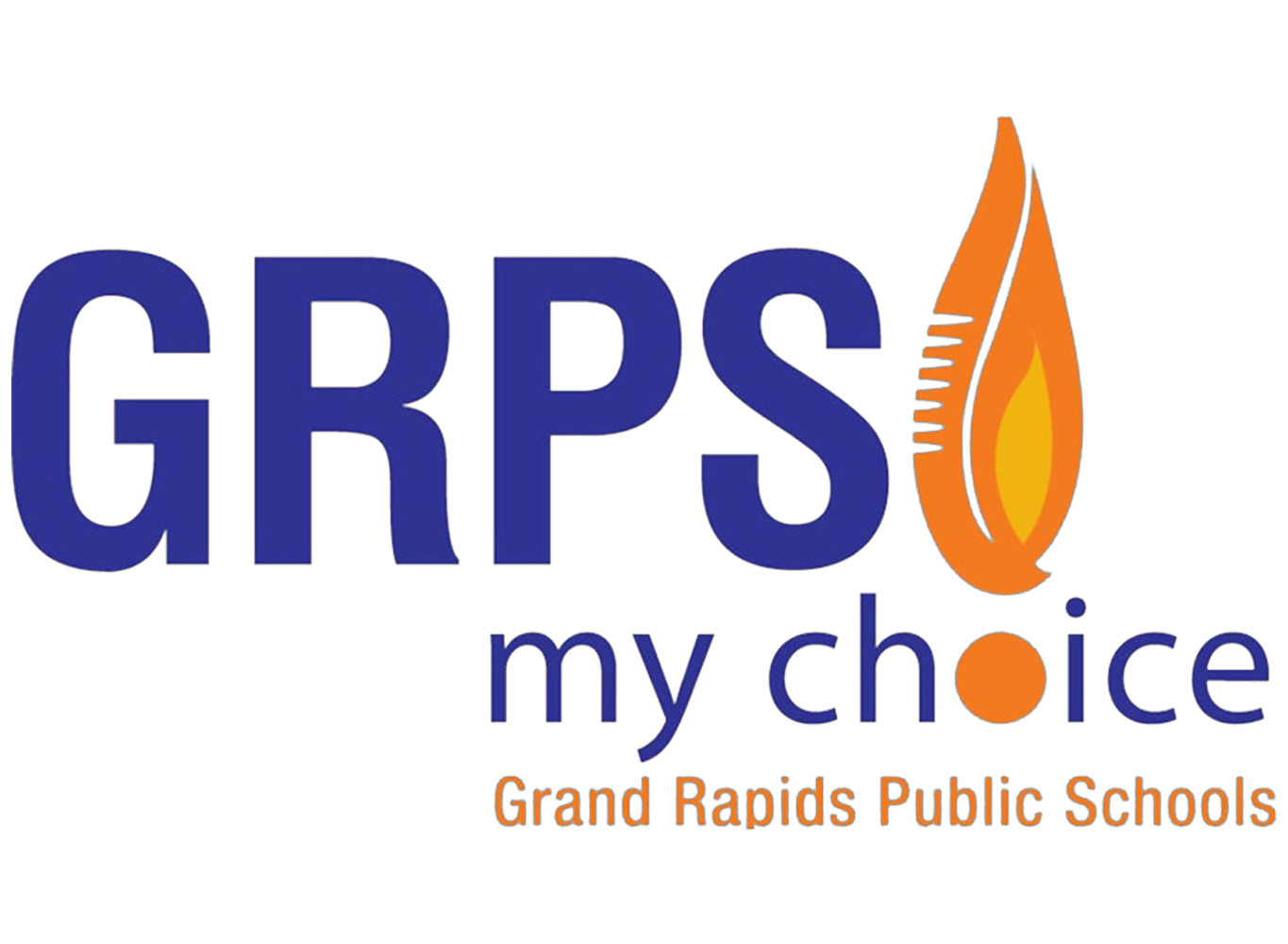Background
Grand Rapids Public Schools is a medium-sized district comprising over 40 schools filled with more than 14,000 students and just over 1,200 academic staff.
Mike Hastings, one of two instructional technology specialists for the district, sought to improve classroom technology for teachers. Previously a teacher, Hastings dealt with the pitfalls and limitations of technology offered by consumer-oriented solutions almost daily. Grand Rapids Public Schools (GRPS) classrooms housed physical tech cabinets with a Microsoft Surface tablet/desktop PC control unit, sound and video controllers, and an Apple TV plus AirParrot for casting, all ultimately relying on a projector with a bulb to display to the classroom. As far as user devices, PK-1 students used iPads, grades 2-12 used Chromebooks, while the teachers had Microsoft devices.
Challenge
With the current patchwork of devices, the instructor was often stuck in the corner monitoring the tech cabinet, rather than focusing on delivering content and instruction. The results for screen casting with the Apple TV and AirParrot were frustrating, as any video was slow, with extended buffering and audio not aligning to the video movements, making it difficult to keep students engaged and effectively communicate the lesson. This limited the use of casting technology to static presentations or pieces of content, which restricted the breadth of content on offer, negatively impacted student engagement, and inhibited the classroom teacher’s flexibility to deliver lessons as planned in the classroom. In his role as an instructional technology specialist, Hastings chose Vivi to implement a cost-effective, reliable, and device-agnostic solution for teachers and students alike to engage more meaningfully in a classroom setting.
Solution
To address the legacy infrastructure, and to roll out a manageable solution designed for success, GRPS opted for a tiered pilot approach with Vivi. Initially GRPS added Vivi to 23 classrooms in a single school as part of a classroom overhaul that included removal of the tech cabinet and long throw projector, and replacement with Epson short throw projectors, Epson wired document cameras (“doc cams”), ceiling-housed Lightspeed audio, new speakers, Bluetooth microphones, Ergotron mobile desks, and, of course, Vivi. They coupled this with a training program for instructors to deploy the intuitive Vivi app from their Microsoft Surface Pro devices. They addressed the biggest challenge, screen casting, by focusing on Vivi’s easy-to-use screen casting feature to overcome the limitations presented by the existing Apple and AirParrot technology. The results were unmistakably positive, performing far beyond what the AirParrot and Apple TV combination had ever been.
Building on that success, GRPS expanded adoption to promote use of more of Vivi’s app features aimed at heightening student engagement, including screen capture and annotation. Now approaching a complete district rollout with nearly 1,000 Vivis deployed, GRPS plans to use Vivi’s video capabilities for instructor training on how to use additional Vivi features. This includes the use of Vivi whiteboard technology, eliminating the need to purchase and maintain expensive smartboards, and allowing instructors the freedom to adapt quickly to the needs of the classroom, roam and engage one-on-one or in small groups, and share screens with the larger group.
Outcome
As a result of device agnostic Vivi, classroom tech cabinets that planted the instructor in one location have been supplanted by Ergotron rolling carts with a tablet device, in this case Microsoft Surface Pro devices, to serve as mission control for the instructor. This allows the teachers to get around the classroom and interact with their students while wirelessly casting remotely.
Easy-to-Use App
The easy-to-use nature of the Vivi app empowers teachers to use the tools they feel most comfortable with (casting, whiteboard, polls, quizzes), while involving their students with the material in a variety of ways, on any given day. Thanks to Vivi’s rapid adoption by GRPS teachers, Hastings sees a positive shift in how teachers manage their classrooms and deliver their lessons. “Vivi enables our teachers to be free to roam the classroom and adjust to each student’s needs. For example, they can sit next to a student who is having a tough day, to do some proximity classroom management, but still be able to pause the video and have other students lead a discussion or solve a math problem from the safe space at their desk rather than at the front of the classroom.”
Increase in Engagement Means Greater ROI
Anecdotally, GRPS’ observational instructional rounds have reported a 180-degree turn in the amount of student engagement due to teachers physically roaming the classroom, not stuck at the back or the front of the room. Meanwhile, the Vivi dashboard reports demonstrate the tens of thousands of hours that GRPS teachers are using Vivi each month, with some individual teachers logging hundreds of hours connected to Vivi individually. This usage data is invaluable for administrators like Hastings, as they seek to justify budgetary items for their technology expenditures from year to year. The data also highlights areas where they can shift budget away from countless helpdesk and technician hours that used to be required for firmware and software updates, troubleshooting, and connection issues, and invest in other, more long-lasting, and reliable components as result of Vivi.
“I’m excited to see the transformational impact of student engagement via the Vivi app in all the classrooms. I see teachers finding that feature they love, and really taking advantage of it, whether it’s the screen capture and annotation, which is certainly one that I would have been a huge fan of, or students using the whiteboard. All those features just push us further down the line of students being involved and engaged in a part of their education,” says Hastings.
Streamlined Support for Every Classroom
Hastings and his team have significantly streamlined troubleshooting and support of classroom technologies with Vivi Central. Whereas support for Apple TV and AirParrot required their physical presence to perform upgrades (not to mention tracking down lost remotes), the team now performs hard and soft restarts and firmware updates remotely. In instances where they do need to go onsite to address an issue, they operate from a straightforward plan to keep things running smoothly.


